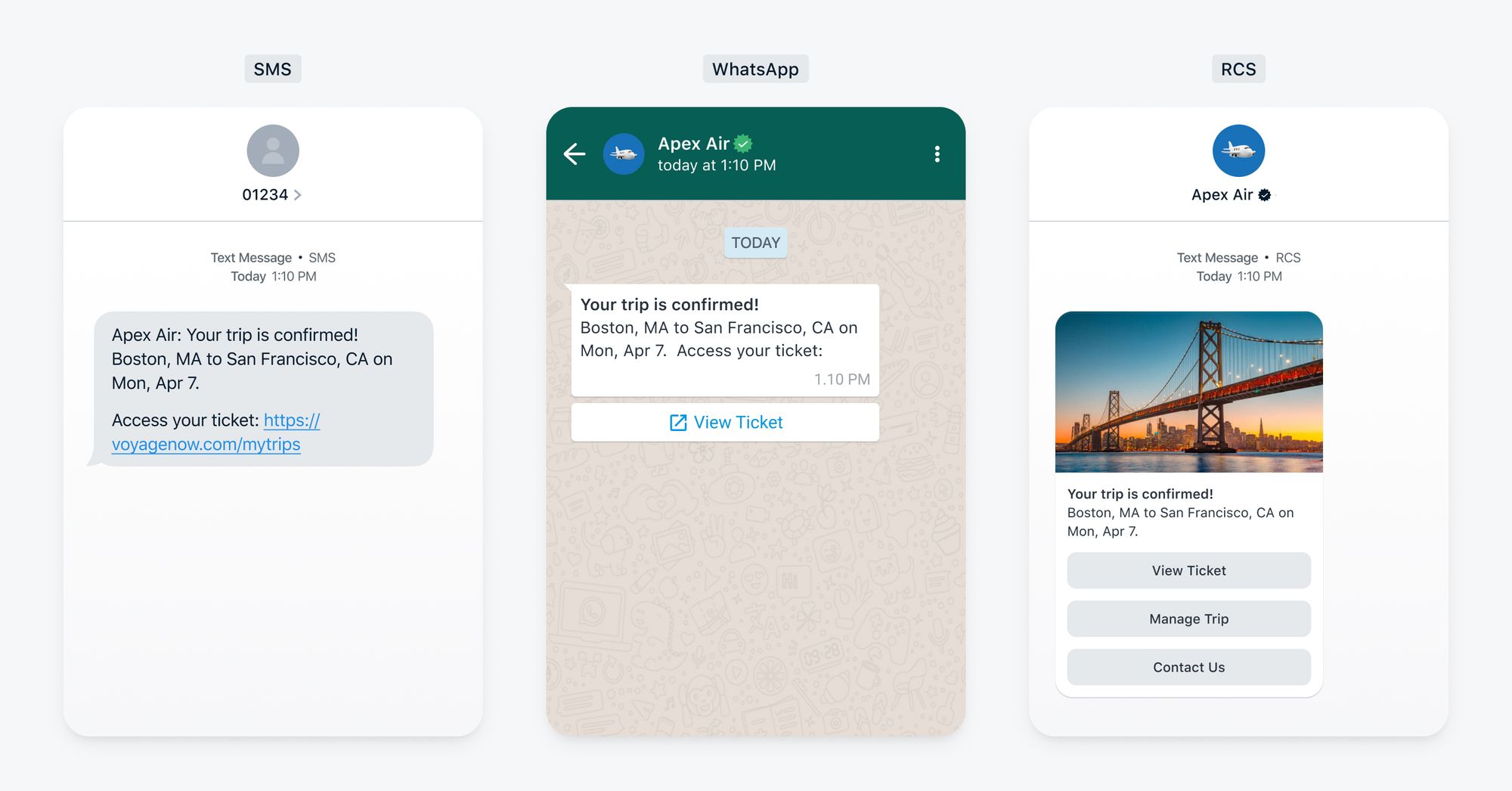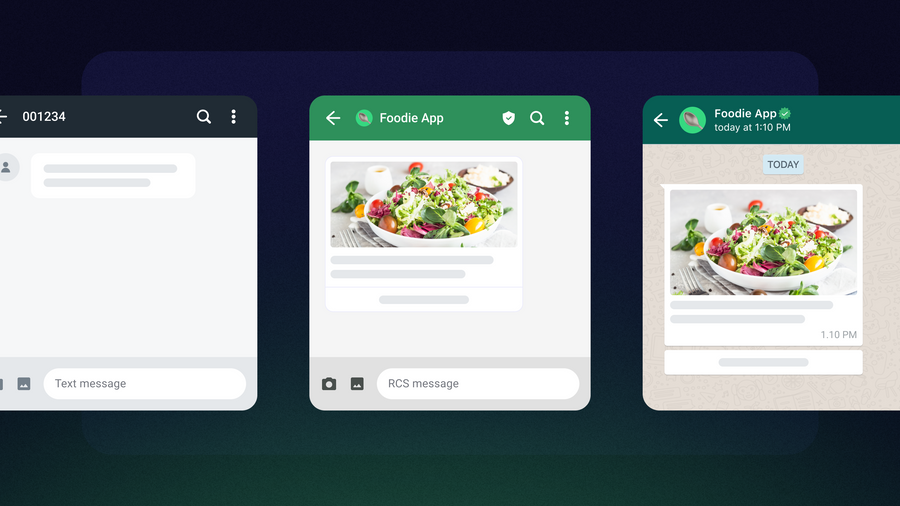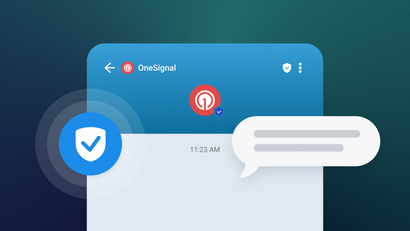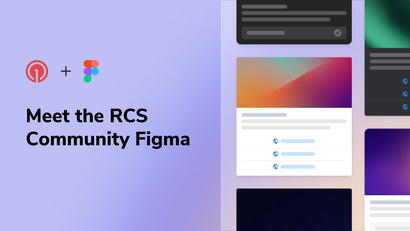A fundamental truth of brand communication that needs to be shouted from the rooftops: Customers slip away when the experience starts to feel like a chore.
I've noticed something in working with teams across industries: we measure attention, we track clicks, we analyze funnels. But we're often missing something fundamental, which isn’t interest-based at all. What’s actually eroding is the customer’s willingness to wait through friction.
Every friction point costs you. Not just in conversion, but in trust.
And this insight reveals something that's quietly reshaping customer engagement: the rise of the in-thread experience. We’re talking about completing transactions, resolving problems, and building relationships entirely within the message itself.
It's powered by RCS, and it's redefining what "frictionless" actually means.
Why we lose customers (the hidden truth)
Most companies assume drop-offs happen because customers change their minds. They don't. Drop-offs happen because we force customers to work too hard.
Consider the typical journey:
A message arrives → Customer clicks a link → Browser loads → Login required → Password needed → Reset email sent → Email checked → Link clicked → Finally, the destination page loads.
By then, the intent is gone. The moment has passed. The customer has moved on.
Friction doesn't just slow conversion... it fractures trust.
Now contrast this with the in-thread flow:
Message arrives → Barcode appears → Button pressed → Confirmation received → Complete.
What’s emerging here is a brand-new mode of customer experience.
Three channels, three completely different experiences

SMS
- Reaches everyone instantly
- Immediately pushes customers outside the thread
- Forces redirection to links, mobile sites, external flows
- Moment of intent is broken
- Enables rich, conversational experiences
- Requires customers to adopt yet another app
- Ecosystem depends on user choice
- Global reach, but fragmented in many markets
RCS
- Lives in the default messaging app where customers already are
- No app switching, no new decisions, no ecosystem walls
- Rich media, buttons, and transactions stay in the thread
- Meets customers exactly where they expect to find you
The strategic difference is this: SMS makes customers leave. WhatsApp makes them choose. RCS lets them stay.
The simplest path is the one people complete. Always.
Looking for more direct RCS comparisons?
Explore RCS vs. SMS and RCS vs. WhatsApp for the full breakdowns!
The hidden value of the in-thread moment
Most leaders fixate on efficiency. That matters. But there's something deeper happening.
When a traveler rebooks a flight, they don't navigate a phone menu. When a shopper gets a barcode without leaving their messaging app. When a patient confirms an appointment in seconds. When a banking customer verifies a transaction without switching contexts.
These moments send a signal: "This brand understands me. This brand respects my time."
That feeling—almost imperceptible, but unmistakable—becomes loyalty.
AI: The silent multiplier inside the thread
When AI joins the message thread, something remarkable happens.
Real-time AI-powered personalization increases customer satisfaction and removes cognitive load at scale.
AI in the thread:
- Understands intent before the customer fully articulates it
- Recognizes context and adjusts responses accordingly
- Suggests the next best action thoughtfully, not robotically
It’s technology shaped to meet human expectations, not to corral people through a system. We must recognize that customers, and people at large, don't want to be handled; they want to be understood.
The competitive reality you should know about
We're entering an era where customers expect:
- Fewer steps
- Fewer clicks
- Fewer decisions
- Fewer interruptions
- More instant, effortless outcomes
With RCS adoption expanding globally and messaging becoming the primary channel for support, transactions, and loyalty, the message thread is no longer just a communication channel. It's becoming:
- A storefront
- A support desk
- A loyalty engine
- A checkout flow
- A service hub
- All in one place
The brands adapting to how customers actually behave—not how legacy funnels were designed—will win.
Those who cling to old patterns will lose. Not overnight. But steadily.
What this means for your business
Keeping the experience in-thread has become table stakes for modern communication.
It represents a fundamental shift in how you think about customer journeys. The new approach feels more conversational, with each touchpoint keeping the person in perpetual motion.
The real variable here is how fast teams are willing to evolve.
Because the competitive window won't stay open forever. The brands leading this transition are already building defensible advantages in engagement, retention, and customer lifetime value.
The shift is already happening
If you're still pushing customers out of threads and expecting them to follow, you're working against human behavior - not with it.
The leaders I’m speaking with are using RCS to reimagine entire customer flows from the ground up.
This format works best when it informs the entire interaction model, not just a single touchpoint. And the companies moving fastest on this are already pulling ahead on retention, loyalty, and revenue per customer.
What matters now is timing. The advantage goes to the teams that act while the window is open.
Start building where your customers already are
If you’re ready to bring your customer experience into the thread where it actually belongs, we can help you get there. OneSignal works with teams to launch RCS quickly, design richer in-thread journeys, and turn high-friction moments into the effortless ones that every brand is after.
Reach out, and we’ll show you what an end-to-end RCS experience looks like for your business.




